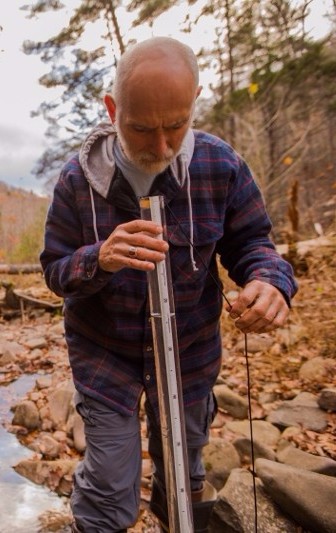New Report: Using Turbidity Standards to Protect Water Quality
A volunteer uses a specialized tool called a secchi disc to take a turbidity reading.
One of the biggest threats from pipeline construction is increased sediment in our streams. This sediment muddies the water and once it settles silts over the stream bed smothering insects and other invertebrates that build the foundation of the aquatic food-web.
Citizen scientists in our water quality monitoring program use a measurement called turbidity to determine the clarity of a stream’s water. The more opaque the water, the more sediment is suspended in the water column.
Just this week, WV Rivers and our water quality monitoring program partner, Trout Unlimited published a report detailing the effects pipeline construction has on turbidity in streams and the resulting impacts to aquatic life. The report investigates Virginia’s and West Virginia’s water quality standard for turbidity, and how regulatory agencies enforce the standard.
The report includes recommendations to state agencies for strengthening water quality standards around turbidity to better protect streams and rivers impacted by pipeline development. Read the full report here.





